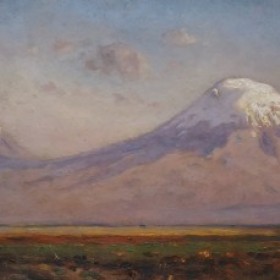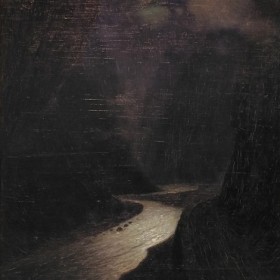
Gevorg Bashinjaghyan
Bashinjaghian was born on 16 September 1857, in a small town of Sighnaghi in eastern Georgian province of Kakheti. After finishing the local school, he was admitted to the Arts School. In 1878, Bashinjaghian moved to the Russian capital St. Petersburg, where he became a student at the Imperial Academy of Arts a year later. Mikhail Clodt was one of his teachers. He graduated from the Academy in 1883, also winning a silver medal for his Birch Grove.He returned to his hometown Sighnaghi the same year and soon started to travel throughout the Caucasus: Lake Sevan, Yerevan, Ashtarak and the holy capital of the Armenian Church - Ejmiatsin, Georgia and the Northern Caucasus, which caused the artist to make a row of canvas of the local landscapes. During the next year, Bashinjaghian visited Italy and Switzerland, where he learnt about the classic European art and also saw the Alps. He later wrote that "the Alps are beautiful, but they cannot win your heart if you have seen the Caucasus.
He returned to Russia and settled in Tiflis, the cultural center of Armenians of Russia. In 1890s Bashinjaghian had exhibitions in Moscow, Odessa, St. Petersburg and Novocherkassk. In 1897, he created a series of oil painting of Ani, the medievial Armenian capital of thousand churches. In 1923 Bashinjaghian became a member of the Armenian Artists' Society.
Bashinjaghian died on 4 October 1925 in Tiflis and was buried at the side of Sayat-Nova's tomb in the backyard of Saint George Cathedral.
Exhibitions of Bashinjaghian's works were held in Yerevan, Moscow St. Petersburg and Riga, many of them in 1957-1958, in memory of the 100th anniversary of his birth. A street in Yerevan is named after him.

